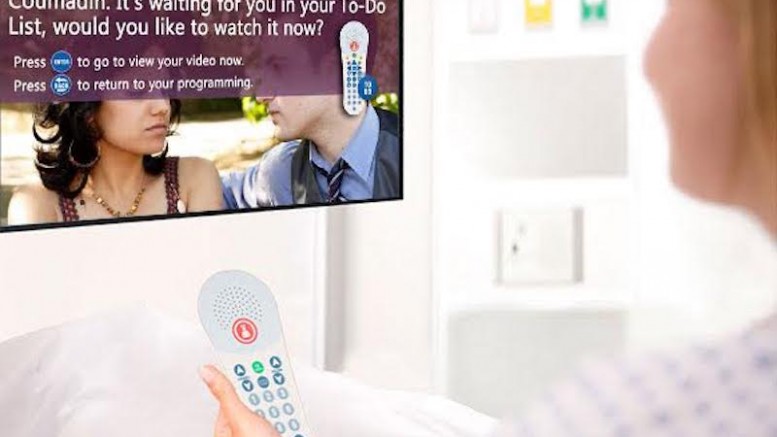TeleHealth Services’ Patient Education Platform Supports Key Initiatives That Reduce COPD and Other Chronic Disease Patient Readmissions
Charleston Area Medical Center has reduced readmissions through a comprehensive clinical strategy including the addition of a video-based patient education system from TeleHealth Services, the nation’s leading provider of interactive patient engagement solutions.
Charleston Area Medical Center (CAMC) is a non-profit, four-hospital system in West Virginia. In 2015, CAMC increased their efforts to reduce readmissions for chronic obstructive pulmonary disease and other chronic conditions. CAMC added the TeleHealth Services’ SmarTigr solution to standardize patient education and increase patient engagement. The initiative, including patient-specific education, has already lowered readmissions.
For example, readmissions for COPD dropped by almost 30 percent compared to the previous year. West Virginia ranks fourth in the nation for prevalence of COPD. The state’s hospitalizations for COPD have consistently exceeded national rates, in some years twice the national rate. Nearly one third of all prescribed educational videos viewed by patents addressed COPD and pneumonia. CAMC documented lower readmission rates for both diseases.
“We had everyone from our hospital administration to our maintenance crew in training to use the interactive patient engagement technology. Our entire health system was on board with SmarTigr from the very beginning,” said Beverly Thornton, education division director at CAMC’s Health Education and Research Institute.
Dr. Don Lilly, associate chief medical officer at CAMC, was one of the early champions, reviewing video content and building curricula for chronic disease patients. “As a physician I’ve seen the importance of education in helping people take better care of themselves after a hospitalization. A lot of our patients have literacy issues, so reading is not the best way for them to learn,” Lilly said, adding that the National Assessment of Adult Literacy reports that only 12 percent of adults have proficient health literacy and are able to self-manage their health. “Video is an effective way for our patients to learn about their disease process and how they can manage it,” he said.
Natalie Osborne, LPN, and Angelia Fugate, LPN, serve as “nurse navigators” at CAMC. They disseminate disease-specific “video prescriptions” to front-line nurses who provide SmarTigr access instructions and the list of required videos prescribed to patients. These video prescriptions also become part of the patient’s electronic medical record. “The prescription for education isn’t optional. It’s an expectation for the nurse and patients,” said Fugate.
Records of patients viewing the videos are tracked with reports, which are sent automatically by the SmarTigr system to the navigators’ email. Patients are also asked to complete quizzes to assess comprehension of the videos. “When interactivity follows learning, patients retain more information,” said Thornton.
Clinicians share many success stories from the effectiveness of video education. For example, 90 percent of adults who use prescription inhalers do so incorrectly–a contributing cause of preventable readmissions. “We had a patient learn to use her inhaler correctly from watching a video about pulmonary medications,” Osborne said. “When she saw the nurse and patient actors in the video using the inhalers correctly, it helped her recognize that she’d been using her inhaler the wrong way all along. We reinforced with bedside teaching and had the patient do a demonstration.”
Dr. Lilly said video education is making a difference. “Many of our patients are visual learners and can better retain information from videos than from reading patient handouts,” he explains. “They spend much more time watching television than reading written material in their daily lives so it seems more natural for them. Videos stimulate conversation and facilitate learning for the whole family. When patients involve their own family members while they’re still here in the hospital, it means they have more support and a greater chance of compliance once they go home. That, in turn, helps to keep them from coming back to the hospital.”
Reduced Readmissions Linked to Hospital Revenue
Reimbursement penalties for avoidable readmissions and healthcare-acquired conditions, along with quality of care measurements for value-based purchasing, are part of the Affordable Care Act and the Centers for Medicare & Medicaid Services (CMS) effort to improve healthcare. For some hospitals, these value-based penalties could amount to more than $1 million a year.
“With significant implications for revenue reimbursements, hospitals continue to improve care by leveraging technology and documenting success with data,” said Matt Barker, vice president of marketing for TeleHealth Services. “We help improve patient care while also automating and measuring outcomes in ways that optimize the patient experience, streamline care and enhance hospital revenues.”

